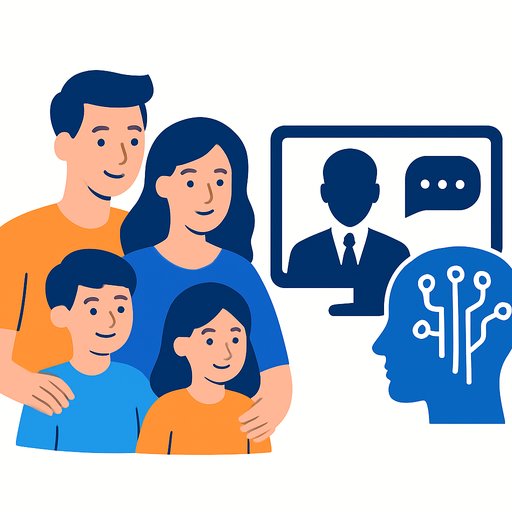Media Relations: Americans trust family for news (not media or AI)
Trust has shifted. Americans now put more weight on what their family and peers say than on most news brands or AI systems. That rewrites the playbook for PR.
According to the 5th annual Disinformation in Society Report from the Institute for Public Relations and Leger, 82% trust family for news, 79% trust "people like me," and 75% trust friends. Local news is the top formal source at 64%. ABC News leads national outlets at 59%. Trust in AI sits at 34%, up from 21% last year.
Institute for Public Relations
Why this matters for PR
Mass reach alone won't move belief. Information is spreading person-to-person, not just publisher-to-audience. Your story needs to travel through people-cleanly, simply, and with proof that stands up in a text thread.
"People like me" is the new gatekeeper
The survey doesn't define "people like me," which is exactly the point. Respondents likely filled in that blank with their own filters. Think:
- People in my community
- People who share my identity or age
- People who share my political views
- People I know or like
- People I follow on social media
- People I already agree with
That ambiguity is the challenge. Increasingly, "people like me" maps to political identity-amplifying confirmation bias and making cross-audience trust harder to earn.
Polarization is high-except locally
Trust gaps between Republicans and Democrats are wide across most national outlets. The smallest gap appears with the Financial Times (13 points). CNN and Fox News are the most polarizing. One bright spot: local media shows at least 50% trust from both groups-74% of Democrats and 59% of Republicans express some trust.
Local newsrooms are thinner than ever, but a strong local story still cuts through. Pitch real local relevance, local data, and local spokespeople.
Who gets blamed for disinformation?
70% of Americans say disinformation is a major issue, up 10 points year over year. Half say they encounter misinformation daily. 61% say PR professionals deserve at least some blame-well below the levels assigned to social platforms, governments, journalists, and major companies.
Social platforms have pulled back on policing misinformation, reinstating accounts and reducing fact-checking. They're now more like pipes than editors. That shifts more responsibility to the people and institutions posting-us included.
Here's the twist: people mostly don't blame themselves or their circles. Only 12% said family is "very responsible" for disinformation; just 10% said the same about friends, employers, or "people like me."
What PR should do now
- Build for pass-along. Create one-sentence takeaways, simple visuals, and tight FAQs that survive screenshots, forwards, and group chats.
- Map "people like me." Identify micro-communities by geography, identity, and ideology. Equip micro-influencers and community leaders with message kits, disclosures, and proofs.
- Go local-first. Localize data, outcomes, and benefits. Offer local spokespeople, op-eds, and community partnerships. Earn local validation before scaling up.
- Activate employees. Treat staff as trusted messengers. Provide clear guidance, shareable assets, and rules on accuracy and disclosure.
- Show receipts. Lead with primary data, third-party validators, and transparent sourcing. Replace claims with demonstrations and independent corroboration.
- Design portable messaging. Craft a message architecture with short, quotable lines and a simple proof stack that anyone can repeat without losing nuance.
- Plan a misinformation response. Set triggers, roles, and a rapid evidence pack. Publish a living Q&A, log corrections, and update stakeholders quickly.
- Rely less on algorithms. Build owned channels (email, SMS), community groups, and direct relationships. Algorithms change; relationships last.
- Use AI with guardrails. Be transparent about AI use, verify facts with human editors, and cite sources. Train teams so AI speeds workflow without corrupting accuracy. For upskilling, see AI courses.
- Measure trust pathways. Track share rate, save rate, dark social traffic, local pickup, community endorsements, and sentiment by segment-not just reach.
Practical pitching shifts
- Lead with local outcome: What changed on this block, in this school, or for this clinic?
- Package tiny stories: 150-word briefs, one chart, two quotes. Make them easy to lift.
- Pre-brief community validators: Faith leaders, coaches, neighborhood admins, and niche creators.
- Offer proof-on-demand: Source files, raw numbers, and expert contacts ready to share.
- Write for screenshots: Clear headlines, plain language, and context that stands alone.
Bottom line
Trust now moves through people. Win over a person, and you earn their circle. Design programs to be shared, repeated, and defended by the humans your audience already believes.
Your membership also unlocks:






